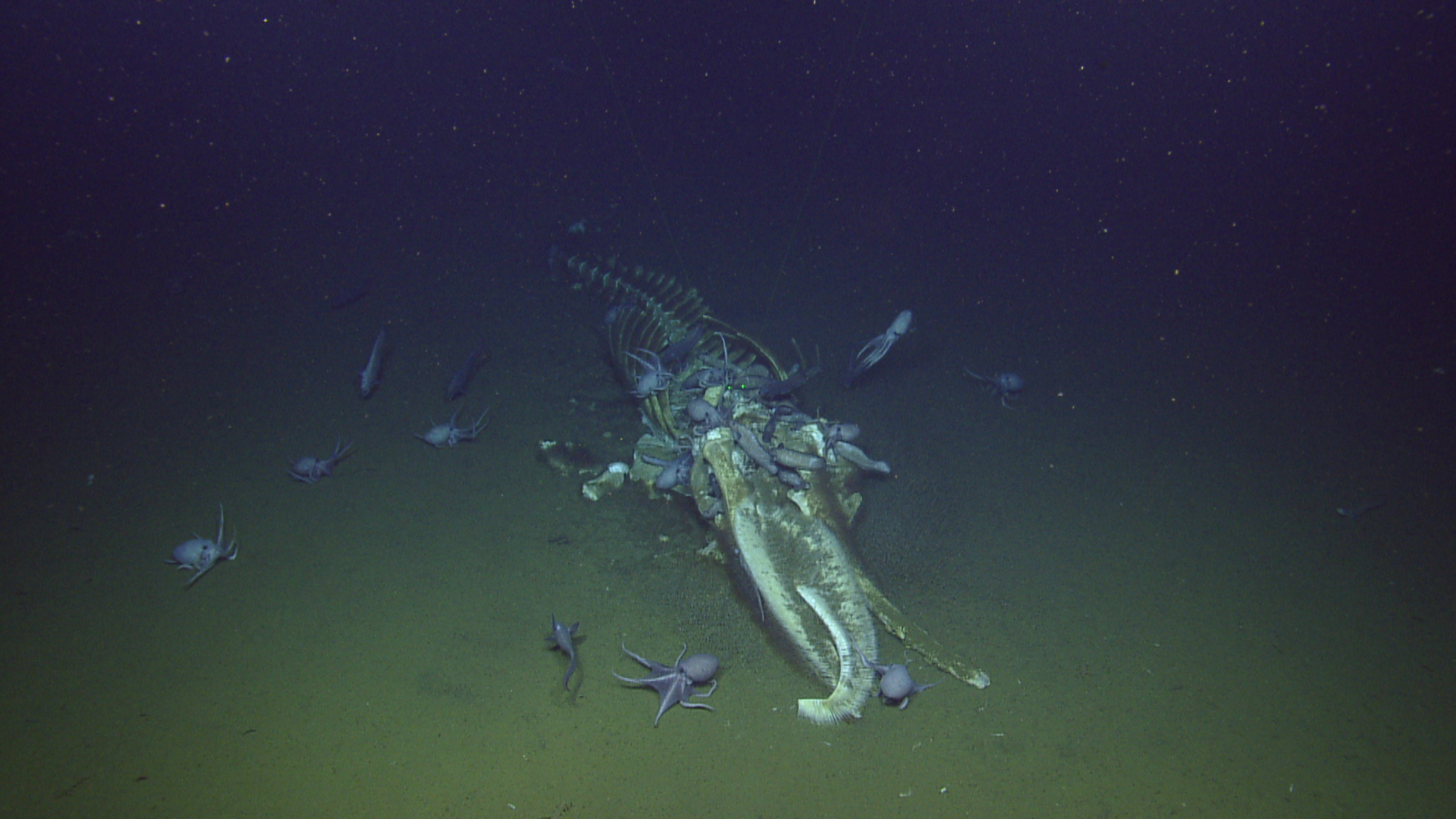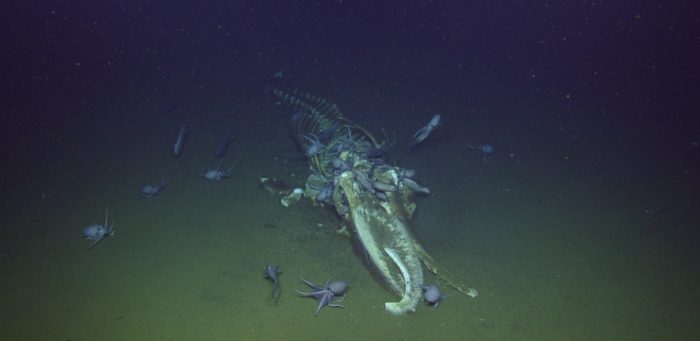
Whale Fall 101
All living organisms eventually get sick and pass away, even whales. But what happens to these gentle giants after the fact? Sometimes their bodies wash up on shore, but the more common outcome is called a whale fall where, quite literally, the whale’s body falls to the ocean floor. Whale falls are like a jackpot for deep sea scavenger species, providing them with an important and long-lasting source food for this ecosystem where food is hard to come by.
Once a whale dies, it may float at or near the ocean’s surface for a few days due to gas buildup, but eventually the carcass sinks, carried by ocean currents and often landing in the deep sea. These whale falls are rare but are most often seen along the migratory routes of living whales.
Since whales are some of the ocean’s largest animals with rich fat stores, their bodies can take quite a while to fully decompose, a process that is slower in the deep sea’s colder waters and greater physical pressure created by the water above. These fallen whales provide deep sea ecosystems with a concentrated food source that can last for quite a while and feed deep sea microbes and larger scavengers like crabs, octopus, eels, and more. Even when the whale’s soft tissue is gone, its organic components — like decomposing cartilage — can enrich the sediment around it for months or even years. The whale’s skeleton also provide solid settling areas for invertebrate colonies.

The remains of a whale fall near the Davidson Seamount in Monterey Bay National Marine Sanctuary. Photo: OET/NOAA
Decomposition of a whale fall occurs in three distinct stages, each of which benefits different marine species. The first stage allows animals like hagfish and sleeper sharks to pull soft tissue (including the abundant fat stores) from the whale’s carcass; this stage can last a few months or as long as 18 months. The second stage involves animals inhabiting the whale’s bones and nearby sediments the decomposing body has enriched with organic compounds; this stage lasts several months or possibly up to five years. In the third and final stage, bacteria decompose fatty composites within the bones, releasing hydrogen sulfide that feeds deep sea shellfish like mussels, clams, and snails. This final stage of whale decomposition occurs when only minerals are left from the bones, which provide a solid surface for suspension and filter feeders to settle on. This can last for a few decades or until there is no more available space on the bones because they are covered in these animals.
Given the rarity of coming across whale falls, scientists and explorers consider themselves incredibly lucky to discover one they can observe and study. In 2019, explorers on the E/V Nautilus set out to visit the octopus garden in Monterey Bay National Marine Sanctuary to study invertebrates. They unexpectedly stumbled upon an active whale fall 10,000 feet beneath the surface, which they took photographs of as they live streamed the excursion to audiences at the surface. The researchers explored the whale fall and estimated it to have fallen about four months prior due to minimal flesh and vascular tissue remaining and the presence of crabs, eelpouts, and octopuses. That same whale fall is likely still providing for that very ecosystem today.
While sad, the death of a whale is a renewed opportunity for other ecosystems to flourish and the overall health of the world’s ocean.

